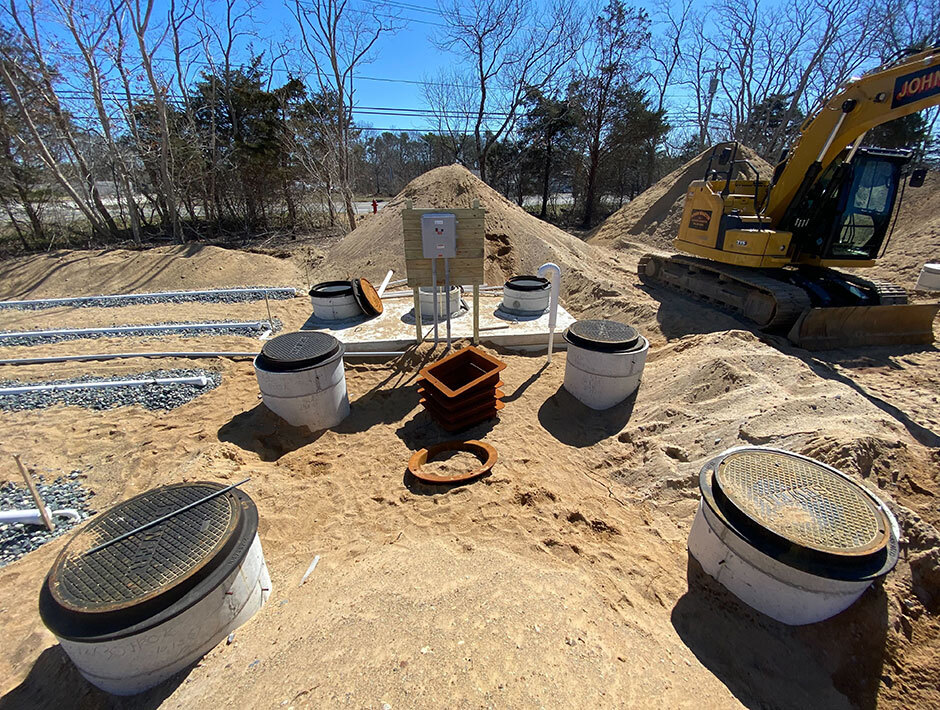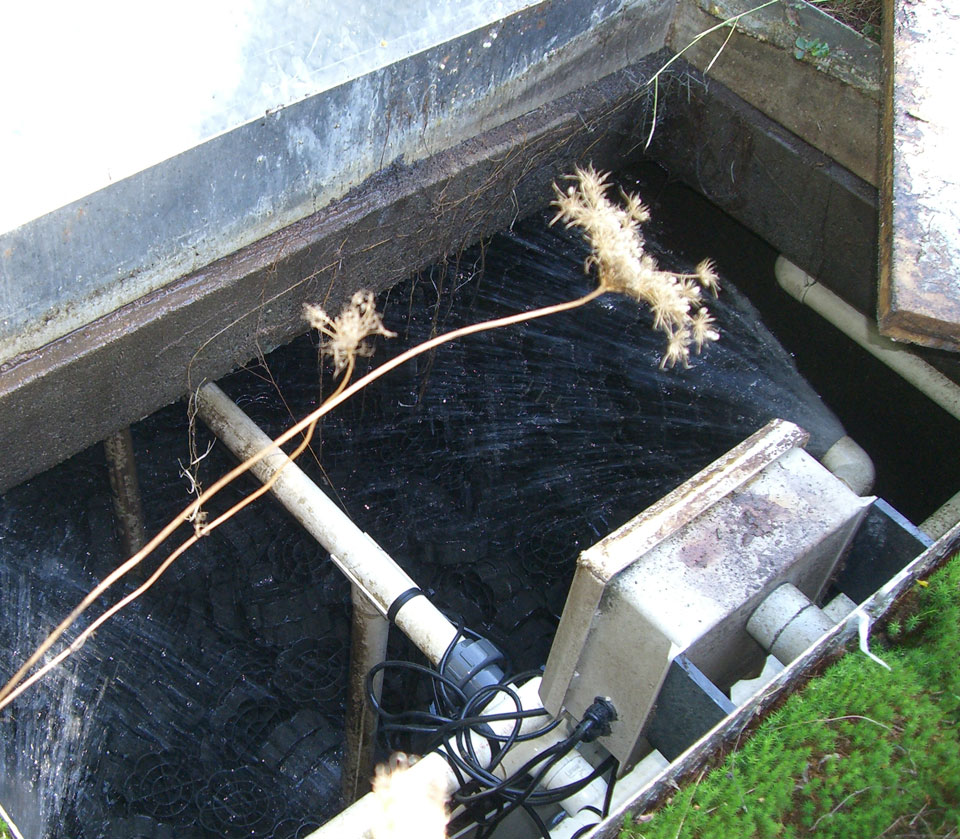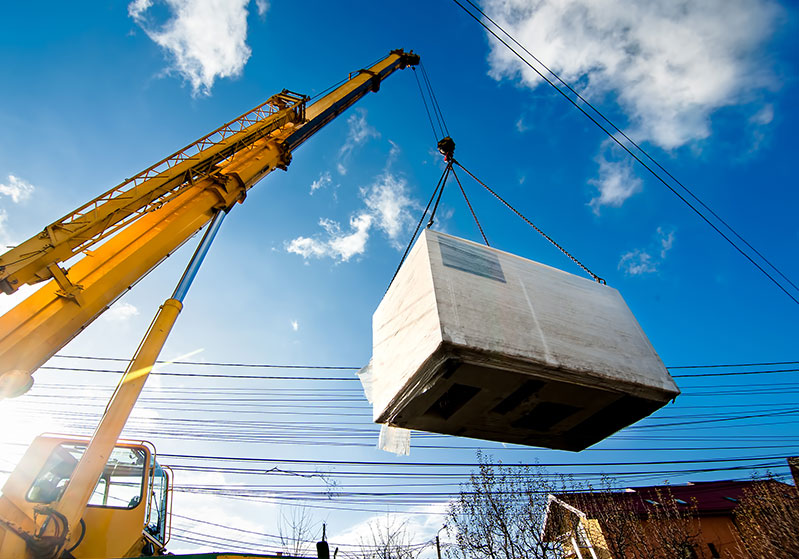SeptiTech
Biological Trickling Filter
The STAAR® Wastewater Treatment System uses a septic tank & recirculating biological trickling filter. Solid-liquid separation occurs in the septic tank, while treatment occurs in the trickling filter media as wastewater passes through the filter.
The filter consists of high surface area media situated over a reservoir into which the percolate drains. A pump in the reservoir distributes a combination of percolate and newly added wastewater from the septic tank over the surface of the media bed. The media provides a large surface area for the bacteria to grow and the open spaces within the media allow air to freely pass through, providing ample oxygen to support the microorganisms.
The percolate from the filtering process drains into the treatment reservoir for further recirculation and discharge. Nitrification occurs as the wastewater trickles over the media, while denitrification, which requires an anoxic condition, occurs in the septic tank with the return of part of the percolate from the treatment reservoir.


System Performance
Raw sewage enters the first compartment of a two-compartment septic tank (concrete, fiberglass, or plastic) that provides about 48 hours of retention at the rated capacity. This compartment provides primary treatment; settleable solids accumulate on the bottom and floatable solids accumulate on the surface.
Effluent from the clear layer flows into the second compartment of the tank, which provides about 16 hours of retention at the rated capacity and contains media to provide additional surface area for BOD reduction. The liquid effluent from the septic tank mixes with the percolate from the filter media in the reservoir below the media. When enough water enters the reservoir, a float activates the treatment process.
During the trickling filter processing, wastewater is repeatedly sprayed over and trickles through the filter media. Air from the outside is drawn in during the recirculation process through the air intake snorkel. Sloughed biomass, made up of organisms and other solid material, is washed out of the media pillows and into the bottom of the processor. A portion of the treated effluent is recycled to the septic tank to enhance the removal of nitrogen by reduction of the nitrate under anoxic conditions in the septic tank. The solids are periodically returned to the first compartment of the septic tank by a dedicated sludge return pump. After treatment, the effluent flows to a decant chamber for pumping to the dispersal system.
Operation of the processor is divided into two process loops:
There is also an alarm control loop that detects abnormalities in the process loops and triggers an alarm sequence to notify operators.


